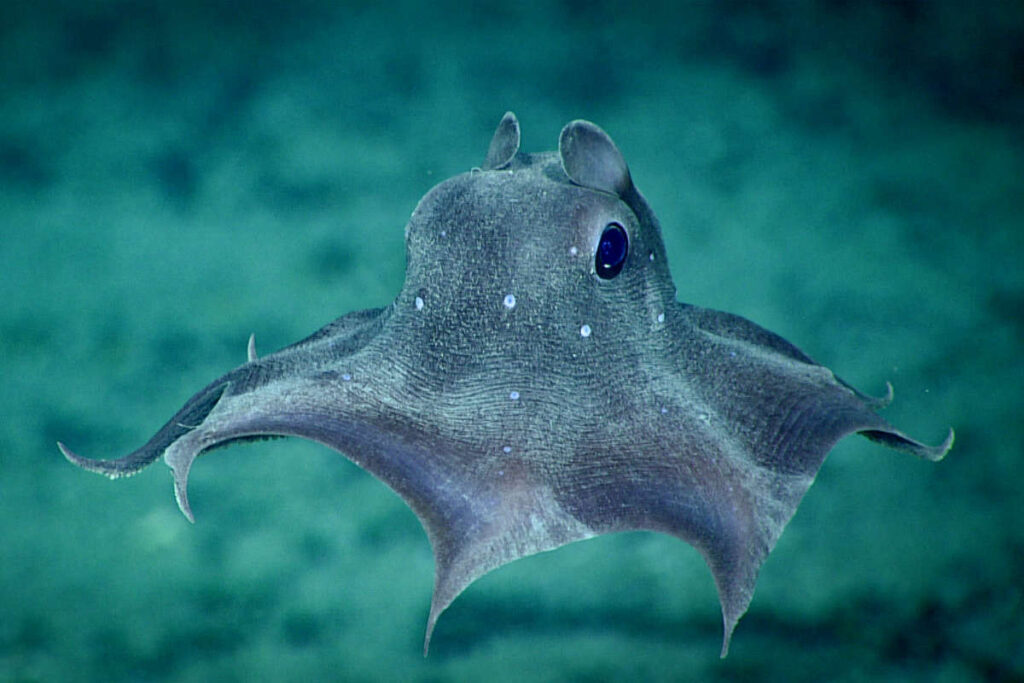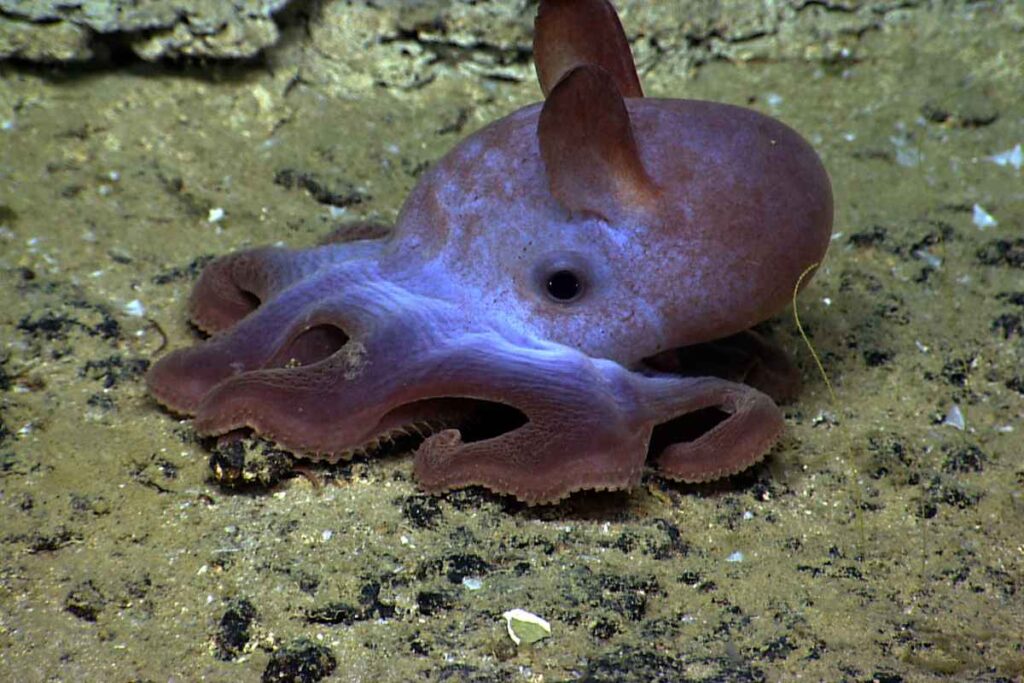Last Reviewed and Updated on February 13, 2023
The dumbo octopus is one of the most adorable creatures in the ocean, with its large ear-like fins and rather unique body shape. It is time to dive deep into the world of these cephalopods; explore some interesting facts about dumbo octopuses, from their habitats to their unique reproduction when it comes to octopuses.
About Dumbo Octopuses
Dumbo octopuses are a group of deep-sea dwelling cephalopods in the Grimpoteuthis genus.
There are 17 known species of dumbo octopuses.
These octopuses are some of the most mysterious creatures in the ocean. Little is known about their behavior and biology as they live in deep waters, making them hard to observe.
Dumbo octopuses are typically small and have an umbrella-shaped body with webbed arms.
Dumbo octopuses feed on small crustaceans and other small invertebrates that they find in the deep ocean.
Interesting Facts About Dumbo Octopus
Read these facts about the dumbo octopuses and learn what makes these animals so unique.

1. They got their name after a Disney character
Their most notable feature is a pair of fins on their sides that resemble elephant ears. This is why they were given the name Dumbo octopus, after a Disney character in the movie Dumbo (young elephant).
2. They are deep-sea animals and the deepest known octopus
Dumbo octopuses live in cold deep waters below 3,300 ft / 1000 meters.
At the moment, they are the deepest living known octopuses; specimens were observed at a depth of around 22,300 ft / 7000 meters.
3. They use their fins for swimming, which isn’t common in octopus
Most octopuses swim by propelling themselves through the water by pushing out water through their siphon. This generates a jet of water that propels the octopus forward.
Dumbo octopuses use their fins for swimming.
4. They are classified as “continuous spawners”
Deep sea environments are vast and somewhat empty. Chances of randomly stumbling to a mate when you are ready to mate aren’t the best, so deep-sea animals have adapted. Dumbo octopuses don’t have a seasonality for mating; they are able to mate at any time. Females carry multiple eggs in various stages of development, so there are always a few that are ready to be fertilized.
They only lay one or two eggs at a time.
5. Unlike other octopuses, the female doesn’t guard the eggs
When it comes to other octopuses, the females guard their eggs after they lay them, and they guard them with their life, literally. When the eggs hatch, the female soon dies of hunger and exhaustion.
This is not the case with dumbo octopuses; they lay their eggs and move on with their lives.
6. Their eggs have a tough casing
The eggs dumbo octopuses and other ciratte octopuses are large and have a tough casing. They attach these eggs to deep-sea corals.
Once the young octopuses hatch, they emerge as fully developed juveniles capable of living on their own.
7. Dumbo octopus doesn’t have an ink sac
This is yet another thing that sets these apart from most other octopuses.
8. They most likely “suck” food into their mouth
While dumbo octopuses haven’t been directly observed while feeding, it is presumed they feed in a similar matter to the closely related flapjack octopuses (both are part of the genus of umbrella octopuses). These octopuses trap small prey between their webbed arms and move it to the mouth by creating strong currents with their cirri (cillia-like strands) on their arms.
9. Dumbo octopuses can’t camouflage
Most octopuses are capable of camouflaging themselves by changing the color and the texture of their skin. Dumbo octopuses lack this ability, most likely as there is no need to camouflage in the environments they live in.
10. Dumbo octopus has blue blood
They do have something strange in common with other octopuses; they, too, have blue-hued blood. The blood of an octopus is blue because it is copper-based (hemocyanin) instead of iron-based (hemoglobin), like the blood of most vertebrates, including humans.

